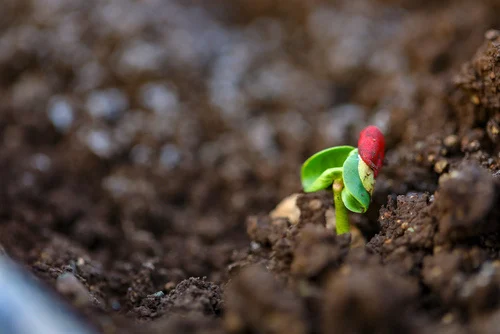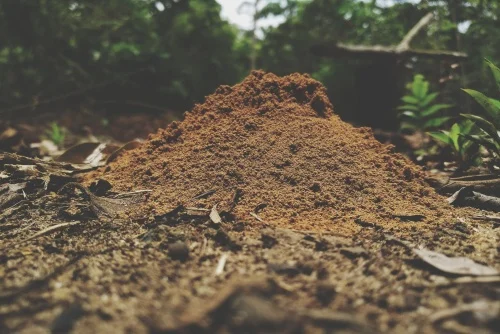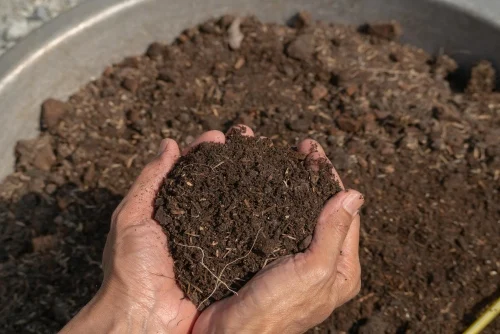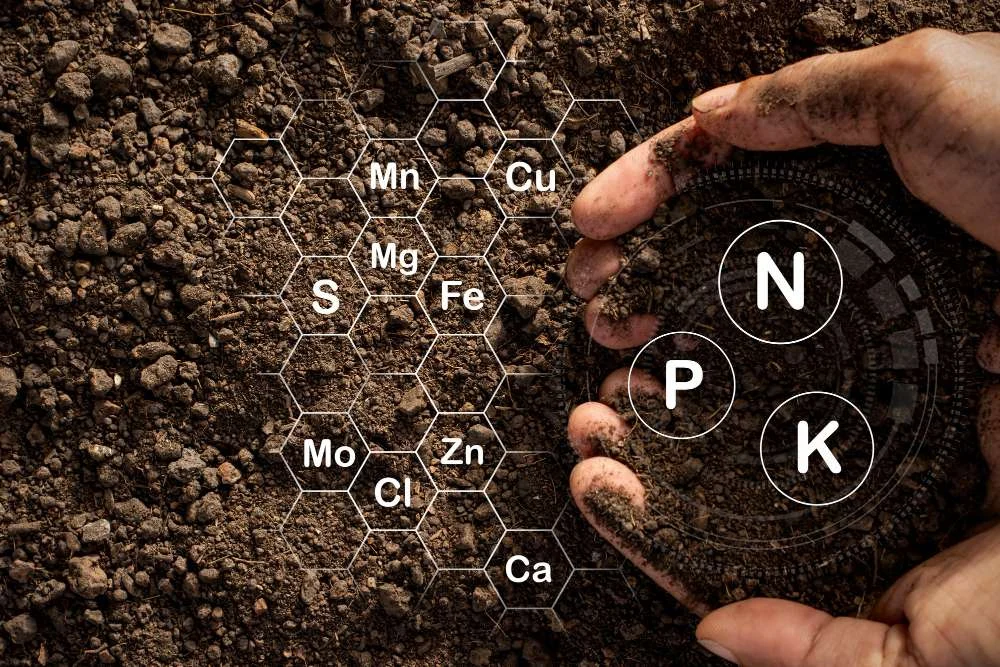As gardeners, we all know our success lies beneath the surface of the garden. I am talking about soil fertility, which I consider the lifeblood of each garden. It is the unseen force that makes the plants strong, triggers heavy bloom, and we get satisfactory yield.
But do you know that your garden’s soil may lose its natural fertility over time? Yes, it can become unfertile, especially if you do not know the caring process to retain the fertility of the soil.
Here, I elaborate on the fertility of soil while informing you of its importance. I also list methods to retain and enhance the soil’s original fertility status and provide you tips for fixing infertility issues. So, let’s not waste time.
Understanding Fertility of Soil
As per the foundational concept, soil fertility is a delicate balance of three factors: physical, chemical, and biological. In elaboration, in terms of chemical factors, we can say a garden’s soil is fertile if the soil carries an adequate amount of pH, minerals, fulvic, carbonic acids, etc., along with the appropriate level of air circulation.
Again, in terms of physical factors, the associated soil structure and texture enhance the suitability of root development by facilitating an appropriate level of water retention and aeration. The biological factors include the level of organic matter, humus, humic, microbes, etc., and if the soil contains these at the appropriate level, we can call the soil fertile.

Most importantly, if the soil meets only one factor, it does not fall into the fertile category. So, it can be said that the soil must incorporate the three factors effectively, consisting of all the mentioned elements at the appropriate level to retain fertility.
Finally, understanding soil fertility requires identifying these elements, exploring their interconnections, and gaining in-depth knowledge about their diverse nature.
Importance of Soil fertility
The following are the importance of soil fertility.
- Soil fertility ensures that you receive the highest level of production.
- If your garden soil has adequate fertility, the plants will get an adequate amount of nutrients in terms of nitrogen, phosphorus, potassium, etc.
- Fertile soil also promotes the retention of eco-system and bio-diversity.
- To retain the soil’s fertility, you have to incorporate soil fertility management practices like organic farming, water conversation, etc., which support environmental sustainability.
- Healthy soil means higher yield, contributing to the world’s food supply requirement.
- Most importantly, healthy soil conditions enhance the carbon level in soil, contributing to the reduction of the greenhouse effect.
- If you are a commercial gardener, the fertile soil provides you with the opportunity to earn more in terms of good harvest.
Methods to Retain and Enhance Soil Fertility
Even though I prefer eco-friendly methods to boost my garden’s soil fertility, I list some inorganic methods for your convenience as well.
Addition of Organic Matters
The addition of organic materials substantially increases soil fertility. Organic materials like compost, green manure, vermicompost, bone meal, peat moss, mushroom compost, etc., are the most popular and easily available.

Also, you can prepare these in your garden. The addition of organic matter facilitates nutrient enhancement, soil structure improvement, water retention, and microbial activity increment.
The cumulative improvement of all these factors improves soil fertility and also ensures retention of the appropriate fertility state.
Crop Rotation
Crop rotation is another eco-friendly method to boost your garden’s soil fertility. In this case, you implement a strategic gardening approach in which you do not grow the same fruit or flower consecutively for three years. Here, you change the crop type every two years.
Following this, the rotation of crops does not allow the decay of a particular type of nutrient, as every plant has its own nutrient requirements.
I must inform you that crop rotation not only supports soil fertility but also triggers sustainability, pest control, weed suppression, etc.
Cover Crop
It is another phenomenal method to retail the fertility of your garden soil. In this process, you plant non-cash crops when a particular area of the garden or the whole garden is not in use.
There are several non-cash crops that you can plant, such as annual ryegrass, oilseed radish, oats, wither cereal rye, pulses, alfalfa, clover, sudan grass, and many more.
This method improves soil health by increasing nutrient cycling, improving soil structure, boosting weed suppression, and so on.
Nutrient Management
It is certain that appropriate nutrient presence is important for the retention and improvement of soil fertility. So, if you incorporate proper nutrient management, your garden’s soil will remain fertile.

In this case, the best way is to go for a lab test of the collected soil sample. It will reveal fertility-related issues in terms of deficiencies, nutrient conditions, etc. Based on the findings, you take appropriate measures to boost the nutrient level.
Here, the general measures are adding fertilizers like urea, ammonium nitrate, ammonium sulfate, triple superphosphate, diammonium phosphate, potassium chloride, microns, and so on.
Again, to adjust the pH level, you have to use wood ash to increase the pH level and elemental sulfate to decrease the pH level.
Mulching
In my personal opinion, this soil fertility improvement method is not that effective, but it has the capability to boost soil fertility partially. In the mulching process, you cover the soil surface with straws, wood chips, shredded leaves, grass clippings, etc.
Apart from these organic mulching materials, you can also use inorganic mulching items like gravel, landscape fabric, rubber mulch, etc. The mulch keeps the soil moist, regulates the soil temperature, controls erosion, etc.
This is to inform you that the most suitable times to mulch are early spring, after planting before dry weather comes, and when you grow perennial plants.
Tips to Fix Infertile Soil
If your garden soil has already become infertile, the application of the following tips can bring good results.

- Collect the soil sample and get the test result. Be sure about the soil characteristics: acidic, neutral, or alkaline. Also, find out the soil type: sandy, loamy, clay, etc. Now, evaluate the soil’s suitability against the decided plant’s fertility requirement. Based on the evaluation result, the fertility of the soil should be fixed. For instance, if you need less acidic soil, mixing finely crushed lime is an effective solution. However, I suggest you select the plant based on soil characteristics and type. Use only organic matters. This plant growth will improve fertility naturally.
- You can use microbial inoculants to fix the soil fertility problem. In this case, the associated beneficial bacteria and fungi will enhance the soil’s microbial activities. Following this, the organic matter will be broken down, releasing nutrients and fixing soil health.
- Go for minimum tillage so as not to disturb the soil as much as possible. Also, keeping the soil idea for a few seasons is an effective approach to return the soil fertility level as earlier.
- Whatever soil fertility improvement method you apply, you must keep strict monitoring. Your monitoring will let you know the effectiveness of your soil health improvement efforts. The monitoring will also allow you to import adjustments in the method if there is anything not working as expected.
- As per my decades-long experience in gardening and soil fertility improvement, I am sure that only pursuing eco-friendly gardening approaches almost never destroys soil fertility. Moreover, the incorporation of organic matter in association with sustainable farming practices improves soil health naturally.
Final Words
I hope that my in-depth discussion of soil fertility will help you enormously to keep your garden’s soil healthy. By incorporating the given methods, you can increase soil fertility effectively.
Also, embracing the tips for soil fertility fixation will help if the soil has already lost its natural fertility level. Finally, I suggest that before incorporating any of the listed methods for soil fertility improvement, you must consider environmental factors and your area’s weather.


